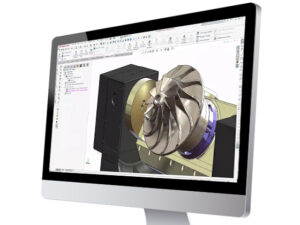The integration of 3D printing technology has been a transformative force, particularly in the production of plastic parts and products. The advent of 3D printing has revolutionized traditional manufacturing processes, offering unparalleled flexibility, customization, and efficiency. Manufacturing companies across various industries are increasingly leveraging 3D printing to produce high-quality plastic components, streamline production, and stay ahead in the competitive market landscape.

Understanding the Role of 3D Printing in Manufacturing Plastic Parts & Products
Rapid Prototyping & Iterative Design
One of the foremost advantages of 3D printing technology for manufacturing plastic parts is its ability to facilitate rapid prototyping. Manufacturers can swiftly create prototypes of plastic components, enabling engineers and designers to iterate designs quickly. This iterative process allows for more efficient design validation, leading to improved product quality and reduced time-to-market.
Customization & Complexity
3D printing enables the creation of intricate and complex geometries that might be challenging or impossible to achieve using conventional manufacturing methods. This capability empowers manufacturers to produce highly customized plastic parts tailored to specific requirements or customer preferences. The flexibility in design allows for innovation and differentiation, providing companies with a competitive edge.
Cost-Effective Production
Implementing 3D printing technology in plastic part manufacturing can result in cost efficiencies. Unlike traditional subtractive manufacturing, where material is removed to shape a part, additive manufacturing through 3D printing involves the layer-by-layer addition of material. This method reduces material wastage, leading to cost savings in the long run.
On-Demand Production & Reduced Lead Times
The on-demand nature of 3D printing allows manufacturers to produce plastic parts as needed, eliminating the need for maintaining extensive inventories. Additionally, reduced lead times in manufacturing contribute to increased agility in responding to market demands and adapting to changing customer requirements swiftly.
Material Innovation & Performance
Advancements in 3D printing materials have led to the development of high-performance plastics suitable for various applications. These materials possess enhanced properties, such as improved strength, durability, and heat resistance, meeting the stringent requirements of diverse industries like automotive, aerospace, healthcare, and consumer goods.
Industries Leveraging 3D Printing for Plastic Parts Manufacturing
Automotive
In the automotive sector, 3D printing technology is used for prototyping, producing lightweight components, and manufacturing custom parts for vehicles. From interior panels to functional prototypes of engine parts, 3D printing facilitates innovation and efficiency in the automotive manufacturing process.
Aerospace & Defense
The aerospace and defense industries benefit from 3D printing technology by creating lightweight, complex parts with high strength-to-weight ratios. Components like aircraft interiors, engine parts, and specialized tooling are manufactured using additive techniques for improved performance and reduced weight.
Healthcare & Medical Devices
In healthcare, 3D printing has revolutionized the production of prosthetics, implants, and personalized medical devices. The ability to create custom-fit and patient-specific parts has significantly enhanced patient care and treatment outcomes.
Consumer Goods & Electronics
Manufacturers of consumer goods and electronics utilize 3D printing to produce prototypes, custom casings, and intricate components. This technology enables the swift development of innovative products while maintaining high standards of quality and aesthetics.
Embracing 3D Printing: The Future of Plastic Part Manufacturing
As 3D printing technology continues to advance, its adoption in manufacturing plastic parts is expected to grow exponentially. The ongoing innovations in materials, printing techniques, and software capabilities will further enhance the potential of 3D printing in delivering cost-effective, customizable, and high-performance plastic components across industries.
By harnessing the power of 3D printing, manufacturing companies can unlock a realm of possibilities, fostering innovation and driving the evolution of plastic part manufacturing into a more efficient, agile, and technologically advanced dimension.
Learn more by visiting our website.
Share
Meet the Author

